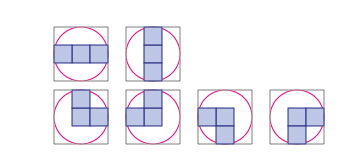Imagine at each lattice point of $\mathbb{Z}^2$ within $[1,3n]^2$, with coordinates $\equiv 2 \bmod 3$, we place, with equal probability, one of these six patterns:

The result is collection of disjoint "worm-like" paths, whose minimum length is $3$. For example, here is an example for $n=10$:

The longest path here starts at $(1,14)$, and has length $27$. My question is:
Q. What is the growth rate of the longest path, with respect to $n$?
With $10$ random trials each, the average longest path for $n=10$ is actually considerably smaller than $27$; it is in fact $18.3$. Here is a graph up to $n=50$; it appears to grow (with considerable variability) roughly proportional to $\sqrt{n}$. Is there some relatively straightforward way to see what is the expected growth rate of the longest path?

I gratefully acknowledge programming assistance from several users in response to this posting @Mathematica Stack Exchange.
